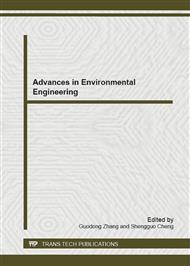p.773
p.777
p.781
p.787
p.795
p.807
p.811
p.815
p.820
Sandy Soil Consolidation and Water-Saving Process Design in the North China Plain
Abstract:
In order to study of the sandy soil use in the North China plain concerning land consolidation and water-saving techniques, the lack of sandy land groundwater resources, groundwater drainage of the land consolidation project due to a lack of resources basis, blind investment and consolidation benefits, also undermine the structure of the groundwater system. This paper took Wangyangxing village in Zaoqiang county, Hengshui City that first carried out, based on the water resource constraints of land consolidation project as example for site evaluation, and then the land consolidation of water-saving technology and the land consolidation process design theory was used. Hengshui City is one of parts of the sandy soil of agricultural land for a pilot study to explore the effectiveness of suitable sandy soil of agricultural land, land consolidation in the North China Plain for the full scientific utilization of water resources to improve the efficiency of the sandy soil land use and the basis.
Info:
Periodical:
Pages:
795-803
Citation:
Online since:
November 2012
Authors:
Price:
Сopyright:
© 2012 Trans Tech Publications Ltd. All Rights Reserved
Share:
Citation:


